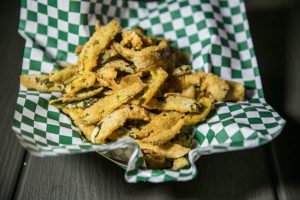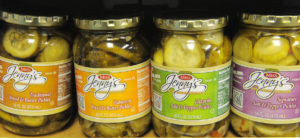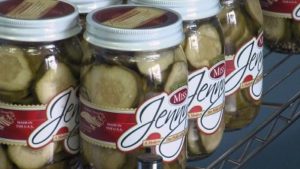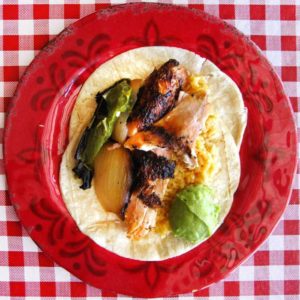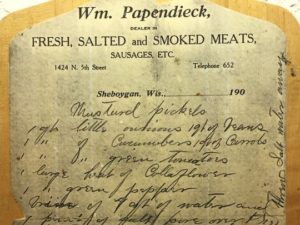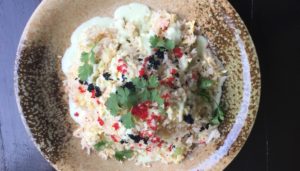7 Fermented Foods That Need to Be on Your Radar
An excerpt from the new book “Eat Dirt.”
By now, you’ve probably heard that fermented foods like kefir and yogurt can do wonders for your gut health, but there’s so much more to explore in the world of healthy fermented foods.
Fermented foods likely don’t wind up on your plate every day, but these ingredients served as go-to meals for our ancestors in an age before refrigeration. In essence, fermentation was an old-fashioned way to extend a food’s “shelf life,” minus the harmful preservation ingredients used in many processed foods today.
Cultures around the globe relied on fermentation, and by doing so, people regularly consumed trillions of gut-healing, beneficial microbes with every fermented meal. During the fermentation process, bacteria and yeasts break down proteins into amino acids, fats into fatty acids and complex sugars into simple sugars such as glucose, making it easier for our bodies to absorb vital nutrients. Additional beneficial compounds are created during this process, including other probiotics that help feed the gut lining and maintain a healthy bacterial balance.
Whether you’re dealing with symptoms of leaky gut, looking into treating candida with fermented foods or simply want to eat a more traditional, healthy diet, consider working some of the world’s most beloved fermented foods into your diet.
#1. Coconut kefir
A nice stand‐in for dairy, coconut kefir is a fermented version of coconut water and kefir grains. Coconut kefir contains some of the same probiotic strains you’d find in traditional dairy kefir, but in smaller quantities. Coconut kefir has a great flavor, especially with a bit of stevia, water and lime juice.
#2. Sauerkraut
Real sauerkraut – chopped cabbage that has been salted and fermented in its own juice – has been around for thousands of years. A staple in ethnic German restaurants in this country, sauerkraut gets a lot of upturned noses because of its bitter taste. That’s too bad, because this fermented cabbage is high in organic acids, vitamin C and digestive enzymes. It also serves as a superior source of natural lactic acid bacteria like lactobacillus. I tend to buy some cabbage or cucumbers at the market and then make my own sauerkraut or fermented veggies at home.
Important note: Normally, I’d recommend pickles as a top probiotic food – but most brands of store‐bought pickles (as well as commercial sauerkraut) should be avoided, as both foods are not naturally fermented. Instead, they’re soaked in salt and vinegar to mimic the flavor of traditional sauerkraut and pickles. This processing technique is faster and cheaper, but results in the loss of many much‐needed probiotics.
#3. Kimchi
Originally from South Korea, kimchi the result of mixing Chinese cabbage with a mélange of foods and spices such as carrots, garlic, ginger, onion, sea salt, red pepper flakes, chili peppers and fish sauce. The mixture is then set aside to ferment for anywhere from three days to two weeks.
Koreans serve kimchi at almost every meal, crediting this zesty pickled cabbage with fighting off the entire culture’s infections and respiratory illnesses (a happy bonus of its being sky‐high in vitamins A, B and C, as well as boasting all that lactobacillus). Research shows that kimchi lowers risks of heart disease, diabetes and metabolic syndrome as well. A 2013 study in the Journal of Medicinal Food showed that participants who ate kimchi daily saw significant decreases in total glucose, total cholesterol and LDL cholesterol (or “bad” cholesterol) after just one week of eating kimchi daily.
#4. Natto
A common topping plopped over white rice for dinner or breakfast in Japan, natto is made from fermented soybeans that contain the extremely powerful probiotic Bacillus subtilis. which has been shown in various studies to bolster the immune system, support cardiovascular health and enhance digestion of vitamin K2. Vitamin K2 improves bone density by moving calcium around the body to where it’s needed most, especially the bones and teeth. The Bacillus subtilis in natto may also improve immune function, according to an animal study published in the Journal of Dairy Science.
You usually have to shop at Asian markets or well‐stocked natural food stores to find this Japanese import. Those on a vegan diet should strongly consider adding natto, since this probiotic‐rich food contains vitamin B12 and is one of the highest plant‐based sources of protein for those who don’t eat meat and dairy products.
#5. Miso
Made from fermented soybeans, rice or barley, miso soup is more palatable than natto but is more likely to be eaten at breakfast time in Japan because it’s believed to stimulate the digestive system and energize the body for the day ahead. The fermentation process produces a rich, complex flavor of umami, also known as the “fifth taste” (the others being sweet, sour, salty and bitter).
#6. Kombucha
The murky‐looking, trendy beverage with an exotic name is a combination of black or green tea, a dash of organic sugar or evaporated cane juice, and a fungus culture known as a “kombucha mushroom” – a pancake‐shaped mass of bacteria and yeast that often appears as a mysterious blob floating in a bottle of kombucha.
Chinese in origin and tart as a Granny Smith apple, kombucha is loaded with a long list of beneficial bacteria, amino acids, B vitamins, and enzymes that deliver a cider-like flavor with a kick of fizziness. Many claims have been made about kombucha, but its primary health benefits include digestive support, increased energy and liver detoxification.

